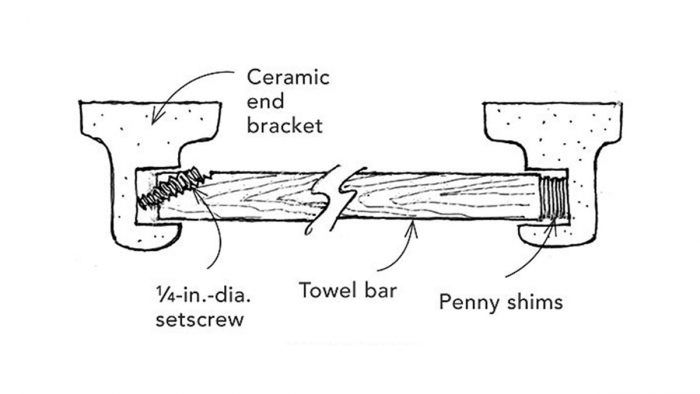
If you have a bathroom with old ceramic tile, chances are the towel bars are made with ceramic end brackets and bars of plastic or plastic-covered wood. If yours are like mine were, they probably didn’t look all that good when new and are looking pretty dismal now. I decided to replace mine with oak to match the cabinets.
I removed the old bars, and then made new ones to fit the sockets.
I cut the length of the new bar to the distance between the inside faces of the brackets, plus the depth of just one socket. This allowed the bar to be easily slipped into place. To keep it from falling, I inserted five or six pennies, one at a time, into the gap between one end of the bar and its socket.
At the other end, I drilled and tapped a diagonal hole for a 1/4-in. setscrew. I couldn’t find a brass or stainless setscrew, so I cut off a length of a brass bolt and sawed a screwdriver slot in one end.
Mark Thiel, St. Louis, MO
Edited and Illustrated by Charles Miller
From Fine Homebuilding #218






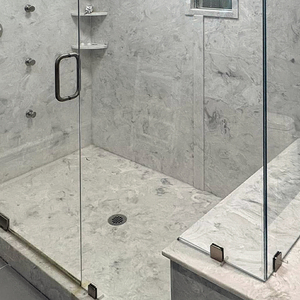
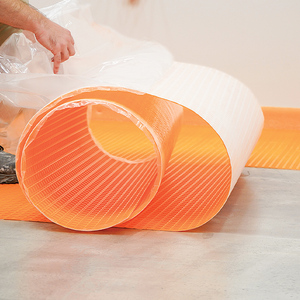
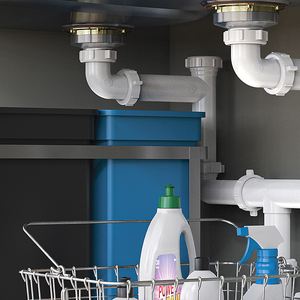
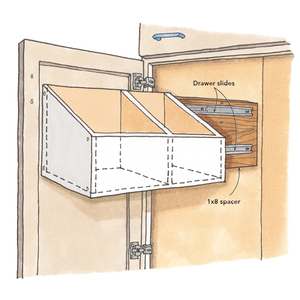








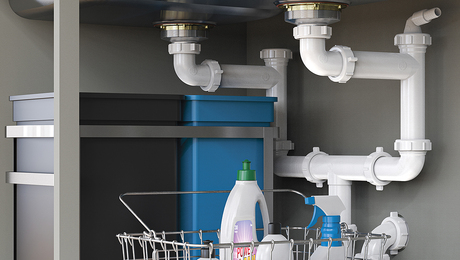










View Comments
I used this method to replace an old towel bar and it worked well though I made what I think are a couple of good improvements.
1) Rather than using pennies as a shim I cut a 1/4" deep piece of the oak I used for the bar and put that into the ceramic end with some wood glue on so it attached to the bar. The end result has much less wiggling than pennies would.
2) And rather than rigging up a set screw, I ran a length of 1/4" oak wood dowel with some wood glue on it through the hole I drilled in the bar, sawed off the end and sanded it flush with the bar once the glue dried. The exact length needed to wedge the bar in place is difficult to determine ahead of time but is easy to deal with by running the dowel through and sawing it off. It also doesn't leave a visible hole in the bar to fill, and the dowel will be less prone to damaging the ceramic bar end than a metal screw.